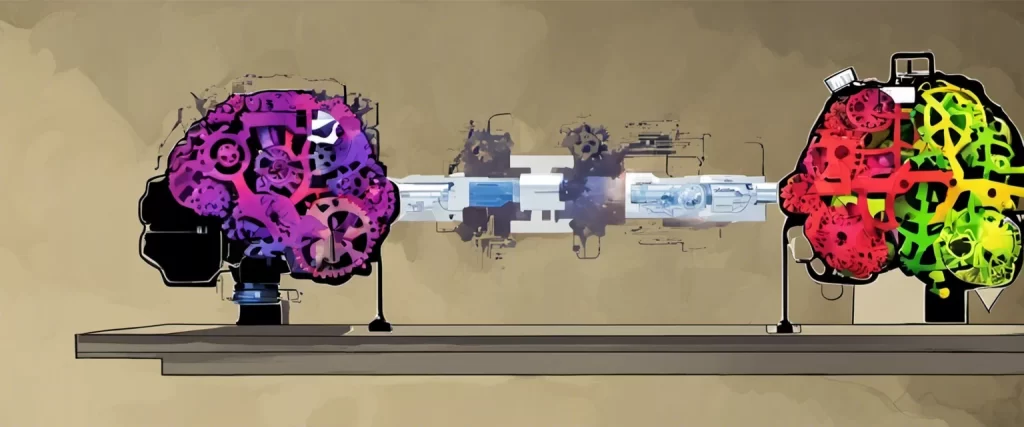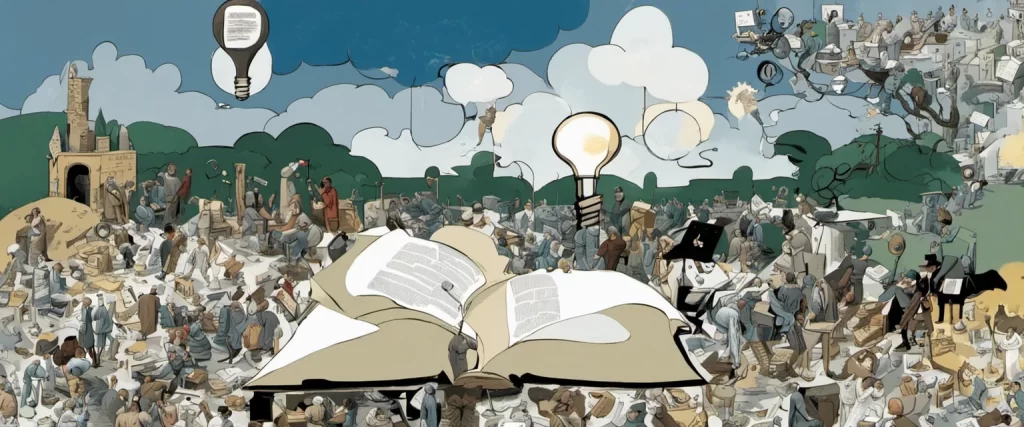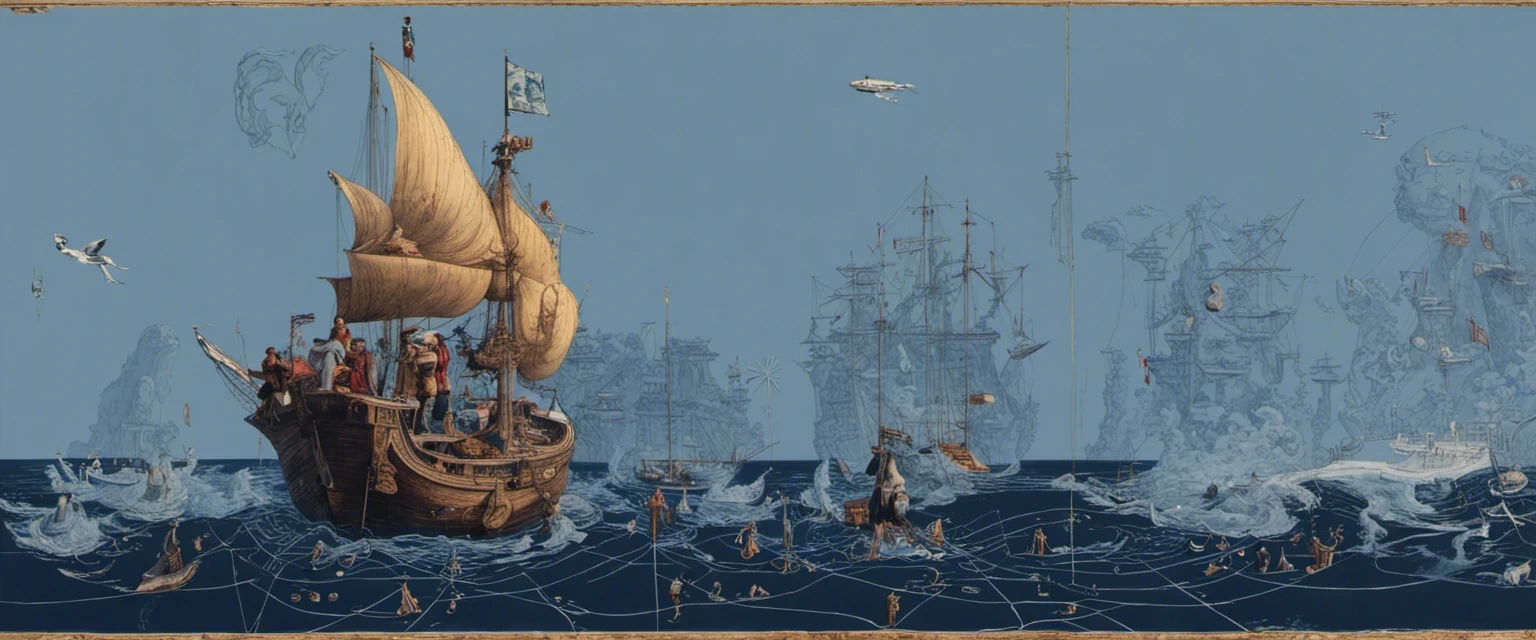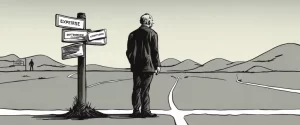—1493 & Guns, Germs, and Steel
The study of historical events and the complex interactions between cultures have continuously fascinated scholars and readers alike. Two renowned authors, Charles C. Mann and Jared Diamond, have contributed significantly to this field with their captivating and thought-provoking works. In this comparative study, we analyze two influential books, “1493” by Charles C. Mann and “Guns, Germs, and Steel: The Fates of Human Societies” by Jared Diamond. These books explore the profound impact of historical events and environmental factors on the development of civilizations.
“1493” delves into the aftermath of Christopher Columbus’s arrival in the Americas, tracing the far-reaching consequences of the Columbian Exchange. Charles C. Mann meticulously examines the biological, ecological, and cultural exchanges between the Old and New Worlds, shedding light on the transformative effects of this encounter. On the other hand, Jared Diamond’s “Guns, Germs, and Steel” investigates the deep-rooted causes behind the unequal distribution of wealth and power across different societies. Diamond’s comprehensive analysis explores the interconnectedness of geographic, environmental, and technological factors in shaping human history.
Both Mann and Diamond employ a multidisciplinary approach, combining historical accounts, scientific research, and anthropological studies to explain the complexities of human development. By comparing these two books, we aim to dissect their narratives, methodologies, and underlying arguments. Moreover, this study seeks to identify the distinct perspectives presented by Mann and Diamond on similar historical events, allowing us to gain deeper insights into the forces driving the rise and fall of civilizations.
In the following sections, we will examine the central premises, methodologies, and key themes explored in “1493” and “Guns, Germs, and Steel.” We will critically analyze the authors’ approaches to historical inquiry, highlight their unique contributions to the field, and assess the effectiveness of their arguments. Through this comparative study, we hope to unveil the nuances that differentiate these works and uncover the overarching questions they both seek to answer.
Ultimately, this study serves as an essential exploration of two seminal works in the realm of historical analysis. By engaging with the ideas presented in “1493” and “Guns, Germs, and Steel,” we embark on a journey through time and space, unraveling the intricate tapestry of human civilization and the factors that have shaped its trajectory.
Brief Summary of Two Books
1493 by Charles С. Mann
“1493” by Charles C. Mann is a non-fiction book that explores the profound impact of the Columbian Exchange on the world. Building upon his previous work, “1491,” which discussed the pre-Columbian Americas, Mann delves into the consequences of Christopher Columbus’ voyages and the subsequent global exchange of plants, animals, diseases, and people. The book illustrates how these intercontinental exchanges transformed ecology, economics, culture, and politics. Mann highlights the great achievements and cataclysmic effects of this interconnectedness, shedding light on both the hopeful possibilities and the deeply entrenched inequalities that arose from this new era of globalization.
Guns, Germs, and Steel: The Fates of Human Societies by Jared Diamond
“Guns, Germs, and Steel: The Fates of Human Societies” by Jared Diamond is an exploration of why certain societies have thrived while others have failed throughout history. Diamond argues that geographical factors, such as the availability of plant and animal species, have shaped the development of societies, leading to differences in technology, social structures, and ultimately, success or failure. He examines how the spread of agriculture, domestication of animals, and development of writing systems played pivotal roles in determining the fate of human societies. Additionally, Diamond explores the impact of colonization and the exploitation of resources by powerful nations. In this thought-provoking book, he challenges conventional explanations of societal differences, offering readers a fresh perspective on the shaping of human history.
Comparison between Two Books

Similarities in global impact
Both “1493” by Charles C. Mann and “Guns, Germs, and Steel: The Fates of Human Societies” by Jared Diamond explore the global impact of historical events and processes. While they approach their subjects from different angles, there are several similarities in how they analyze the effects on societies worldwide.
1. Global Exchange: Both books emphasize the significance of global interconnectedness resulting from exploration, conquest, and trade. “1493” discusses the Columbian Exchange, whereby goods, diseases, and ideas were exchanged between the Old and New Worlds, leading to profound transformations in both hemispheres. Similarly, “Guns, Germs, and Steel” highlights how cross-continental trade and the diffusion of crops, animals, and technologies impacted the course of history.
2. Impacts on Societies: Both books discuss how these global exchanges had significant consequences for societies around the world. They explore changes in demography, economics, politics, and culture as a result of encounters with new peoples, diseases, crops, and technologies. Both authors argue that these encounters led to both benefits and negative consequences for different societies, reshaping power dynamics and altering the course of history.
3. Environmental Determinism: Both authors touch upon the concept of environmental determinism, which suggests that the physical environment shapes human societies. Diamond’s “Guns, Germs, and Steel” focused on how geographic advantages, such as fertile soils and access to domesticable plants and animals, played a pivotal role in the rise of certain civilizations. Mann’s “1493” expands on Diamond’s ideas, specifically exploring how the introduction of new crops and species shaped entire ecosystems and influenced the success or failure of different societies.
4. Long-Term Consequences: Both books delve into the long-term consequences of these global processes. They highlight how the impacts of these historical events and exchanges continue to shape the world we live in today. The legacies of colonization and the exchange of biological resources explored in “1493” and the persistence of inequalities caused by historical advantages discussed in “Guns, Germs, and Steel” are enduring aspects affecting contemporary societies.
In summary, both “1493” and “Guns, Germs, and Steel” address the global impact of historical events and processes. They explore the effects of global exchange, the impacts on societies, the concept of environmental determinism, and the long-term consequences of these events. By analyzing these similarities, these books shed light on the interconnectedness and legacies shaped by historical processes around the world.
Divergences in global impact
“1493” by Charles C. Mann and “Guns, Germs, and Steel: The Fates of Human Societies” by Jared Diamond are two renowned works that explore the global impact of European imperialism and colonization. While both books discuss similar themes, they diverge in their focus and approach, resulting in different perspectives on the subject.
In “1493,” Charles C. Mann primarily examines the consequences of the Columbian Exchange—the global transfer of plants, animals, diseases, and people—in the aftermath of Christopher Columbus’ voyages. Mann delves into the interconnectedness of different regions and societies as a result of this exchange, highlighting how the influx of new species, crops, and diseases significantly reshaped the world’s social, economic, and environmental landscape. He explores various commodities, from silver to rubber, and their significant role in facilitating global connections and transforming societies.
On the other hand, Jared Diamond’s “Guns, Germs, and Steel” takes a broader look at the development and domination of certain societies, particularly European civilization, over others. Diamond examines the underlying factors that led to the uneven distribution of power, technology, and resources throughout history. He argues that geographical advantages, such as the availability of domesticable plants and animals, fertile land, and the absence of geographic barriers, played a crucial role in determining the fate of societies. Diamond challenges the notion of innate superiority or inferiority of cultures and emphasizes the influence of geographical and environmental factors on human history.
While both books explore the global impact of European imperialism and colonization, they diverge in terms of focus and scope. “1493” concentrates on the consequences of the Columbian Exchange, providing a detailed account of how transcontinental trade reshaped societies worldwide. It examines the long-term impacts of this exchange on culture, ecology, and disease dynamics. In contrast, “Guns, Germs, and Steel” takes a wider lens, analyzing the historical factors that contributed to the rise of certain societies and the dominance of Europe. It discusses the interplay between geography, agriculture, technology, and societal development.
In terms of their views on global impact, “1493” emphasizes the complexity and interconnectedness that emerged as a result of global trade networks. It highlights the profound and far-reaching effects of the Columbian Exchange, ultimately leading to the formation of the modern world. Conversely, “Guns, Germs, and Steel” focuses on the pre-colonial factors that determined the varying destinies of societies. It questions traditional explanations of societal disparity and provides an alternative understanding of the global impact based on geographical and environmental factors.
In summary, while both books explore the global impact of European imperialism and colonization, “1493” focuses on the consequences of the Columbian Exchange and its role in reshaping societies, economies, and environments. “Guns, Germs, and Steel” takes a wider perspective, delving into the deeper historical factors that led to the dominance of certain societies, challenging notions of cultural superiority. These diverging perspectives offer different insights into the complex and interconnected history and global impact of European expansion.

Conclusion
Both 1493 by Charles C. Mann and Guns, Germs, and Steel: The Fates of Human Societies by Jared Diamond are highly regarded books that offer valuable insights into different aspects of human history. The choice between which one is more worthy of reading depends on personal preferences and interests.
1493 by Charles C. Mann explores the global impacts of Columbus’s voyages and the subsequent worldwide trading networks that emerged as a consequence. The book delves into the far-reaching consequences of these events, particularly the ecological, economic, and cultural exchanges between the continents, which shaped the world as we know it today. If you are interested in the interconnectedness of different civilizations and the long-term consequences of historical events, 1493 may be a great choice.
On the other hand, Guns, Germs, and Steel: The Fates of Human Societies by Jared Diamond focuses on understanding why certain civilizations evolved differently than others and became dominant. Diamond analyzes various factors, such as geography, agriculture, and the development of technology, that played a role in shaping human societies. If you are intrigued by the factors that led to the disparities between civilizations and how geography and environmental factors influenced history, Guns, Germs, and Steel may be the book for you.
In conclusion, both books provide valuable insights into different aspects of human history, and the choice between them depends on your specific interests. Consider what aspects of history intrigue you the most and make a decision based on that.



